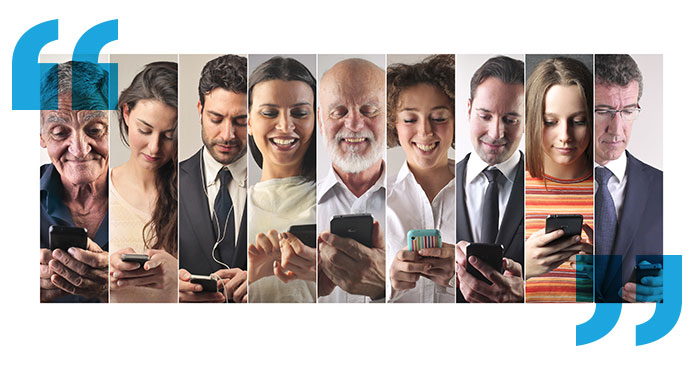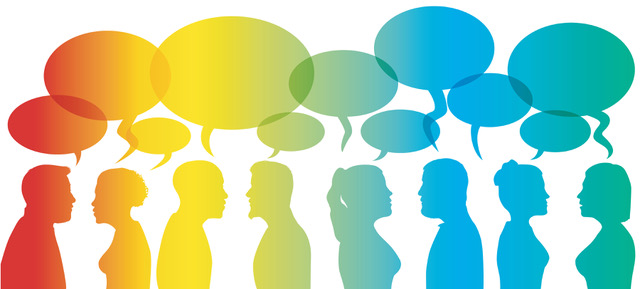By Judith E. Glaser
Published in: Psychology Today
In our “selfie” society that is more and more isolated and individualized, we need to connect socially and professionally in healthy ways to maintain our sanity and productivity. In 2013 the word selfie was voted ‘Word of the Year’ by the English Oxford Dictionary. And ever since then, we continue to see a massive change in social conversations and connections. In fact, in his August 2015 Forbes article, Stephen Rosenbaum noted, “Today, we live in what my friend and Quora rock star David S. Rose calls a “Selfie Society.” Rose might be right, depending on what we mean by the term. Does a selfie suggest selfishness and narcissism, or something new that has been hidden in plain sight because of the judgmental nature of our self-centric brain?
A World of Changes
In a world where we are all sharing and connecting, how is this new technical outreach of connect, capture and share behavior creating a new cultural footprint for us to walk into the future? Is it possible that our new world of selfies and Instagram is not about being selfish at all but about our need to connect and share every moment of our lives with others? Is it being transparent in ways we’ve never experienced before – and taking the older generations by surprise?
Rather than think of selfies as selfish, the new generation is redefining the term and ushering in a new zeitgeist where sharing and discovering is a new norm for uniting our view of the world – enriched by a need to connect our lives with others in more meaningful and transparent ways. Sharing our world-view and moment-by-moment movies is a way for us to build and expand our networks, and give new global identity to who we are, what we think, and how we partner with other people in our ‘social orbits’.
As I see it, this Always-On Camera world is not a sign of a new narcissism; rather, it’s a clear indication of a new connected world in which we’re all sharing and discovering what others’ lives are all about – the first step toward making diversity and social justice visible to all!
Are You In or Out?
As I continue to study the brain, I see that we have inherent survival instincts, but we also have intrinsic Vital Instincts™. These are instincts for connecting, for humanizing, and for co-creating with others with a WE-Centric view of humanity, Survival instincts are about protecting, drawing us into protective and isolating behaviors where we focus on negative interpretations rather than listening empathically to connect deeply with others. Vital Instincts are about projecting – thereby activating our humanity.
When we are socially disconnected, our default mode is to sense a potentially hostile environment. It’s amazing – two people can be in a room listening to the same leader talk, and one person goes into stress response that stops them from thinking straight while the other person is led into fanciful thinking about the future. Why?
We all listen to see if we are ‘in or out’ during a conversation. When we hear something that suggests we are not on the A-team, our body senses that we are being ostracized, dismissed, left out, considered the B or C-team; and at that moment – in .07 seconds flat – we flip out!
Our mind constantly maps who’s in and who’s out in the arenas, networks and societies that matter most to us. We are hardwired for this mind-mapping to occur every time we get together with others. It’s a primary filter – in many cases predicting what happens next.
When we are rejected or when we perceive that we are now out, we tend to fight to get back in. It’s instinctual, and we have multiple reactions to that moment of grave disappointment. Our limbic brain is sensitive to this distinction and our alert system sends out a loud red flag to the rest of the brain saying, “get ready to fight!” When we are in fight mode, we can no longer access our higher-level systems which create the future, innovate, humanize and connect others to each other. Only as a ‘we’ can we connect powerfully to the future yet to be discovered.
Connection and Reconnection
In my life, I’ve experienced periods of close connection and times of isolation – times of tremendous progress and productivity and times of regression and recovery. And from personal experience, I attest: We innovate and create better when we are connected synergistically, not as individuals in isolation. This state of connectivity is designed into our human epigenetics to elevate our genetic code to maximum security, engagement, fulfillment and productivity.
So, whenever I feel disconnected from the people, places and things that matter most to me, I initiate a reconnection – a reunion of sorts to recreate a feeling of family and connection.
Three Steps to Reconnection
Here are three steps you can take to move from dis-ease to ease with connection.
Step 1: Invitation to Connect in Conversation. If you sense that you are disconnected, I encourage you to reconnect with people in conversation. The word ‘lean-in’ is a great phrase to remind yourself that it’s healthy to move toward others rather than away, especially when it comes to going for your goals or anything that will engage others in partnerships! Practice experimenting with new ways to connect so that you engage without stress and activate positive energies in others.
Step 2: Mind- and Heart-Map. When your mind or heart tells you that you are now out where you want to be in, listen to them and initiate a reconnection by way of invitation– invite them to meet, converse, connect and convene. You will innovate more together than you will in isolation. Heart connection is vital in relationships. Your heart is a receptor of feelings. When you feel rejected or excluded, your heart breaks. In fact, your neurochemistry changes as you see reality as harsh, unfair, and punishing and interpret the world as unfriendly. In contrast, when you feel included, your view of reality and the future become more positive. You look for good things, and they seem to appear. As you reach out and connect, you remap your future – mind and heart! You see a brighter horizon and innovate in ways you never before envisioned.
Step 3: Reframe, Refocus and Redirect. When you sense that you are becoming stressed, remember that you can reframe how you think about stress. Stress has a bad rap in the world, as we think of stress as a game-changer in a negative direction – such as, “If you have stress you can’t compete, you can’t thrive, and you can’t live a healthy life.” However, Bruce McEwen, from Rockefeller University, discovered in 1993 a way to reframe stress. His concept, which he labeled Allostatic Load, explains that there are different levels of stress: positive, tolerable, and toxic. The first level is actually a level of healthy stress that gets us moving, fills our tank, and activates us to take action rather than freeze.
Again, the mind and body are so sensitive about the importance of connection that by connecting you will feel the difference in .07 seconds. You will feel more empowered, more optimistic, more able to fly into the future of amazing possibilities!
Judith E. Glaser is CEO of Benchmark Communications, Inc. and Chairman of The CreatingWE Institute; an Organizational Anthropologist, consultant to Fortune 500 Companies, and author of four best-selling business books, including Conversational Intelligence: How Great Leaders Build Trust and Get Extraordinary Results. Visit:www.conversationalintelligence.com; Contact: This email address is being protected from spambots. You need JavaScript enabled to view it. or call 212-307-4386.









